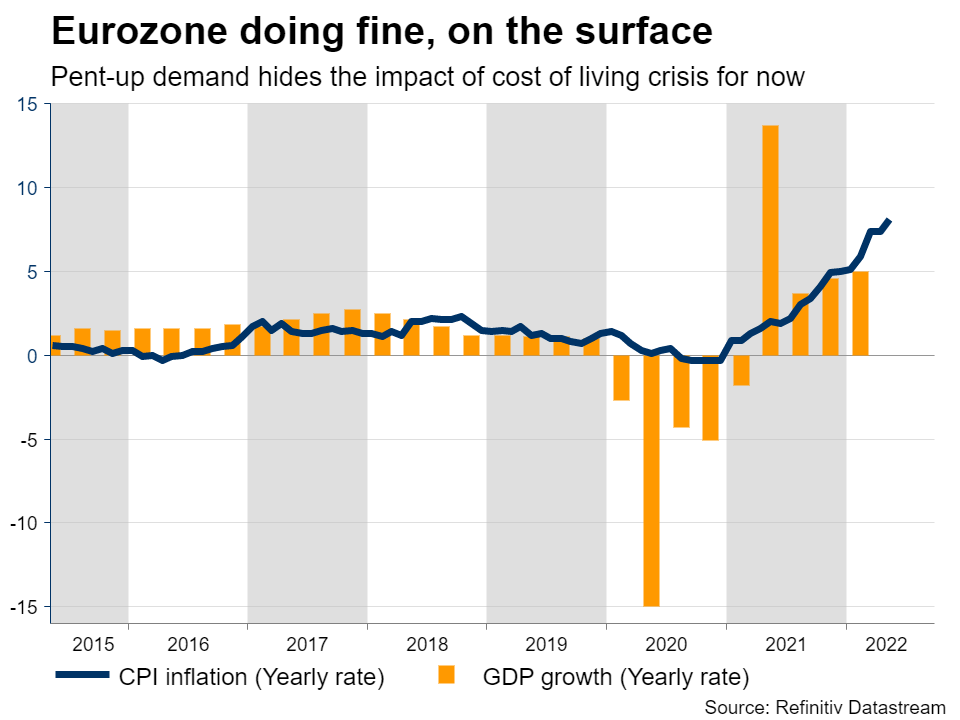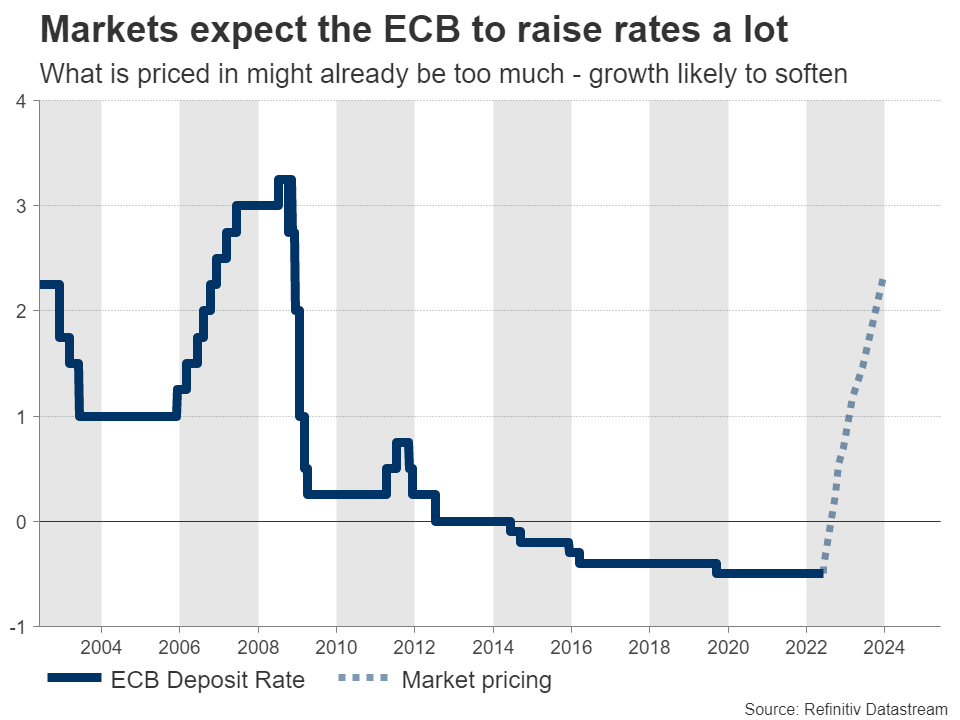Stepping stone
The Eurozone economy has been incredibly resilient in recent months, absorbing the dramatic spike in food and energy prices without any serious injuries. The unemployment rate is at its lowest since the euro came into existence, business surveys point to solid growth this quarter, and inflation expectations remain historically elevated.
Pent-up demand from consumers loaded with savings after the lockdowns has been enough to ‘mask’ the negative impact from the cost of living crisis so far. However, not everything is rosy. Business and consumer confidence metrics have fallen sharply while demand for European exports is dwindling with the Chinese economy going downhill.
Hence, even though the sun is still shining, storm clouds are gathering and the time window to tighten monetary policy is limited. ECB officials would likely have preferred to raise interest rates immediately at this meeting with inflation still firing up, but doing so would violate their own forward guidance, so it is extremely unlikely.
Instead, this meeting will probably be used as a stepping stone to prepare the markets for a rate increase in July.
Meeting playbook
The ECB has telegraphed its intentions well. Asset purchases will end this month, before interest rates are increased next month. President Lagarde even said that the central bank intends to exit negative interest rates by the end of September.
As usual, traders seem to have gone too far with pricing in the tightening. Market pricing currently implies a one-in-four chance of a rate increase this week, which is almost impossible based on the forward guidance and recent commentary. A rate hike of 25 basis points is fully priced in for next month, and there’s an additional 35% probability for a bigger, 50 basis points move.
Therefore, if rates are kept unchanged, the initial reaction in the euro will likely be negative. The secondary reaction will depend on Lagarde’s press conference and whether traders sense that 50bps moves are possible.
Admittedly, there’s no real incentive to signal bigger moves are coming. Raising rates with brute force after asset purchases have stopped would risk panic in bond markets, making the ECB’s job even harder. The last thing the central bank wants is to have to choose between fighting inflation or saving the Italian bond market from a crisis. ‘Slow and steady’ is the name of the game.
Big picture
All told, the risks surrounding the euro remain tilted to the downside. The single currency has recovered recently but this seems mostly like a relief bounce following a sharp decline, not the beginning of a new uptrend.
For starters, the market might be pricing in too many rate increases from the ECB considering the fragility in the economy. Once the reopening momentum fades, there could be a sharp economic slowdown, especially if energy prices remain so elevated. Overall, the euro typically needs a booming global economy and rising stock markets to perform well, neither of which is likely for now.
There are three catalysts that could trigger a trend reversal in euro/dollar. The Fed pauses its tightening cycle, the war in Ukraine ends, or China abandons its zero-covid strategy. A combination of these would be even more powerful. Until then, it’s difficult to call for a revival in the euro.
Taking a technical look at euro/dollar, any declines could encounter immediate support around the 1.0640 region.
On the upside, the first barrier for buyers to overcome would be the 1.0780 hurdle.




